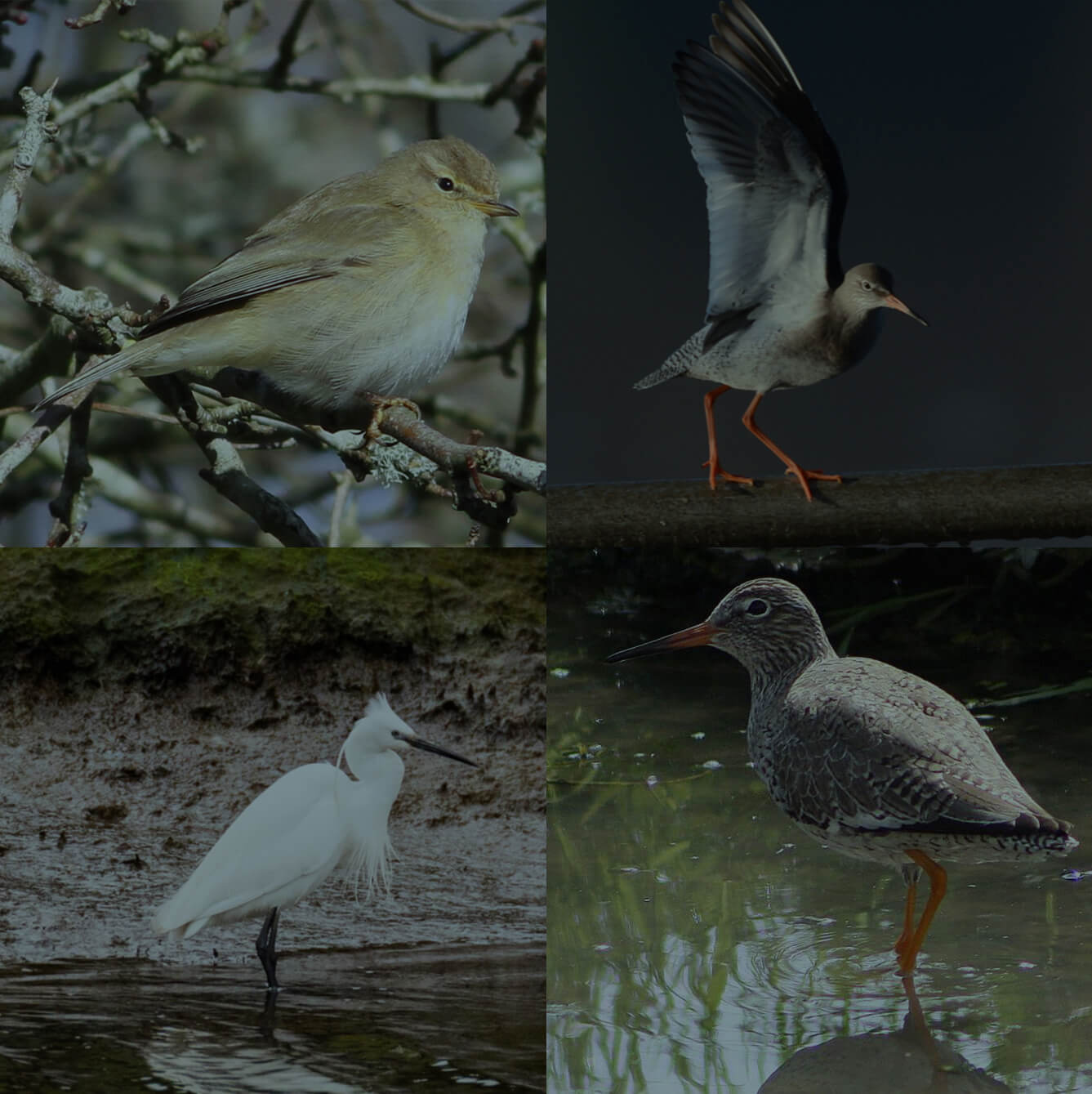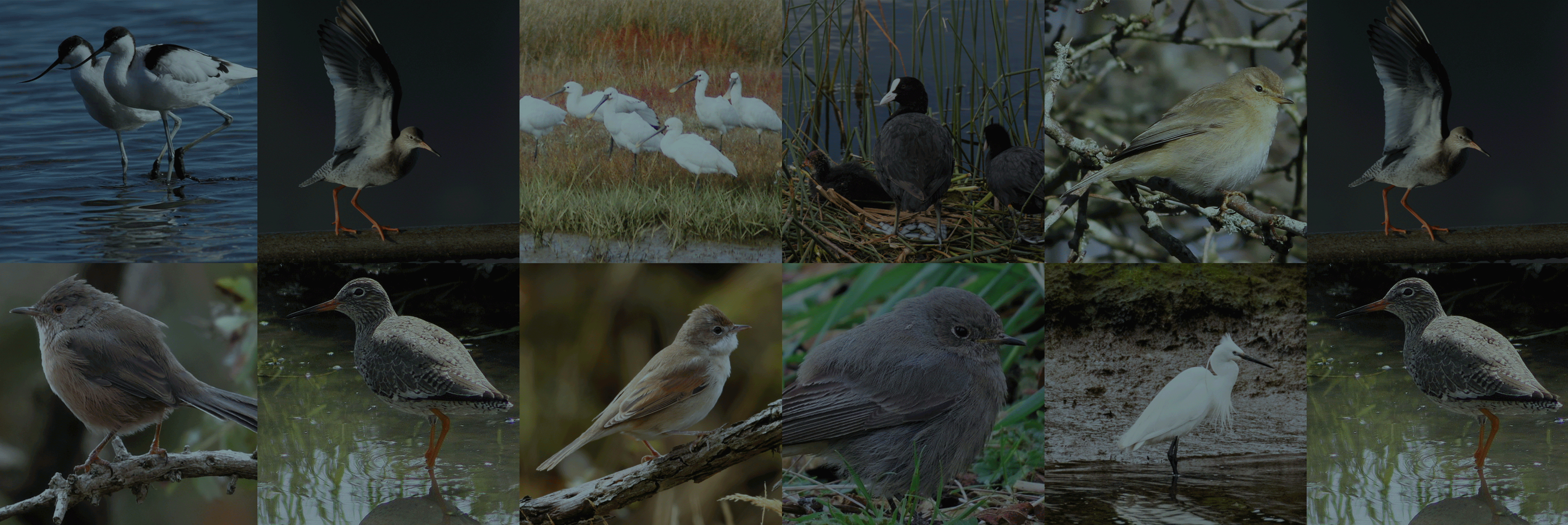An official account of all species that have been recorded and reported by birdwatchers and naturalists in the Poole Harbour area since records began.
The data for this list has been extracted from various sources, but George Greens 'The Birds of Dorset', Mansel-Pleydell's Birds of Dorsetshire, Naylor’s reference manual of rare birds and the back catalogue of Dorset bird reports have provided most information. Data is currently still being researched and records will be updated accordingly.
You can view this information in two different ways. Our alphabetical list provides information on the status of each species within the harbour, finder dates and names, photos and favoured locations. By clicking on the Systematic List button you will be presented the full Poole Harbour systematic list which includes status of species, pending records and historical accounts.
To date, 333 species have occurred and have been accepted within the Birds of Poole Harbour boundaries. A further 11 distinct subspecies have also been seen. In addition, we have two species/subspecies which have been recorded, but are awaiting acceptance by the appropriate records panel.
There are a handful of historical records, for which there is currently insufficient information to allow their inclusion onto the Poole Harbour list, but are believed to be genuine records. They are listed at the end of the list.
Finally, there are a number of feral or escaped species that have been recorded within the Birds of Poole Harbour boundaries. They are included for completeness, but are not included on the Poole Harbour list.
We would be interested in hearing details of any species that do not appeared on this list.
The Birds of Poole Harbour systematic list is a PDF which you can view by clicking on the button below. It was last updated on December 2019.
Full Poole Harbour Systematic List
Bonelli’s Warbler sp.
Latin Name
Phylloscopus sp.
Status
Vagrant
Site And Records Information
Bonelli’s Warbler was split into two species in 1997. Western Bonelli’s P.bonelli and Eastern Bonelli’s or Balkan Warbler P. orientalis. Separation of the two species in the field is difficult and relies largely on differences in call. Consequently records of each and “either or’s” are considered by BBRC.
To the end of 2015 there have been 7 Western’s, only one of the much rarer Eastern and 3 Bonelli’s Sp in Dorset.
A Bonelli’s Warbler Sp on 19th Aug 1974 at Brownsea Island. It has not been possible to identify this bird to one of the “new” species.
Brambling
Latin Name
Fringilla montifringilla
Status
Passage Migrant & Winter Visitor
Site And Records Information
No longer a guaranteed over winterer but definitely a regular passage migrant in October and early November again from ‘Vis Mig’ sites like South Haven, Ballard and Glebelands. Quite often found in amongst over wintering Chaffinch flocks at sites like Arne, Middlebere and Greenlands Farm. An impressive 300-500 birds over wintered at Arne in 2003/04.
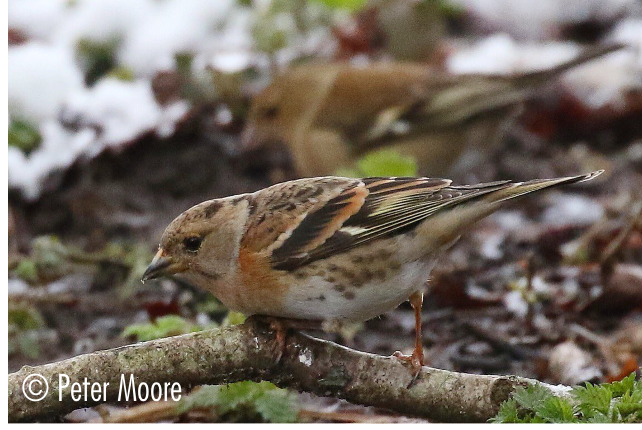
Buff-breasted Sandpiper
Latin Name
Tryngites subruficollis
Status
Vagrant
Site And Records Information
A rare transatlantic vagrant which would normally be looked for in autumn, but with only two Poole Harbour records, one of which being in mid June, it just goes to show you should be prepared to see/find odd birds at odd times of years in odd places.
1 on 12th Sep 2011 on Brownsea Lagoon (N.Hopper)
1 on 15th June 2017 on Lytchett Fields (I.Ballam)
Bullfinch
Latin Name
Pyrrhula pyrrhula
Status
Resident
Site And Records Information
Breeds in urban and rural areas of the harbour favouring areas with thick hedge rows and fruit trees. Frequent at Upton House, Lytchett Bay, Holton Lee, Studland and Swineham. Movements and birds in odd places are also detected at times of passage and are usually mainly local birds dispersing, however in some years genuine migration does occur. This was most noticeable in 1987 when a flock of 40-60 birds were recorded at Studland coinciding with an autumn influx of birds into the county the previous October. Other notable counts have been 30 at Parkstone in Dec 1974 and 40 at Holton Heath on 18th Nov 1984.
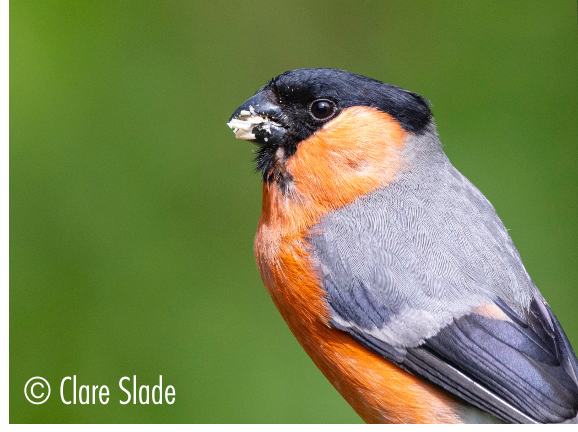
Buzzard
Latin Name
Buteo buteo
Status
Resident
Site And Records Information
Buzzards are commonly seen and heard all around the harbour area. They are most likely to be seen over the farmland, wetlands, the heaths and the conifer plantations but can appear even above urban conurbations to the north and east, perhaps thermalling individually or in groups on warm days or in transit low over the roofs.
Tony Wise said “apparently bred on Brownsea in the 1950’s.” In 1967 F R Clafton wrote excitedly in the Bird Report “In the Rempstone area near Corfe Castle, S P W Corbett thought a pair were possibly nesting and Elizabeth Ollivant reported frequent sightings at nearby Bushey”
During spring up to 20 Buzzards may be seen soaring over open areas from a high vantage point and display often then occurs over suitable nesting sites. They become less conspicuous during the nesting season though can still be encountered soaring singly or carrying prey to young in the nest. In late summer and autumn juveniles can be located by their loud food-soliciting squeals. In winter, the species is often seen on roadside perches such as telegraph poles, presumably waiting for road kill. They also ‘worm’ in fields for long periods during the winter.
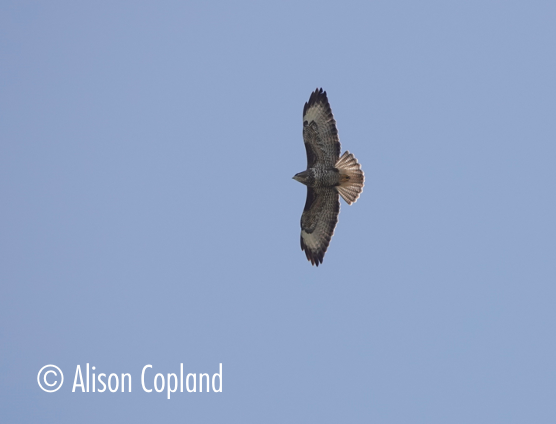
Call 01202 641 003
© 2025 Birds of Poole Harbour Registered Charity No. 1152615

